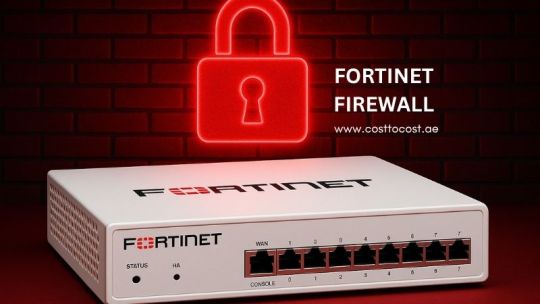#fortinet firewall
Explore tagged Tumblr posts
Text

Powerful Network Protection with Fortinet Firewall
Fortinet Firewall offers advanced threat protection, reliable performance, and secure access control for businesses of all sizes. It prevents cyberattacks, manages network traffic efficiently, and ensures data security. Ideal for enterprises seeking comprehensive, scalable cybersecurity solutions to safeguard digital assets across physical and cloud-based environments.
0 notes
Text

Unlock Networking Skills: CCNA Online Course Training by Eduva Tech
Dive into the world of networking with Eduva Tech's Online CCNA course. Learn at your own pace and achieve certification!
#eduvatech#networking course#ccna course#ccna course online#online courses#online study#ccnacertification#ccna training#ccnatraining#fortinet firewall#online training#ccna
0 notes
Text
Fortinet Firewall Training by Eduva Tech: Become a Security Expert
Join Eduva Tech’s Fortinet firewall training to master network security. Learn essential skills for configuration, management, and threat mitigation from industry experts. Enroll now!
#fortinet firewall#online fortinet firewall training#fortinet firewall course#fortinet firewall course training#online fortinet firewall course training
0 notes
Text
Discover Fortinet Firewall: Features & Benefits
Explore the robust features of Fortinet Firewall and its role in enhancing network security for businesses.

0 notes
Text
Shop for the best quality firewalls in Dubai UAE

Fortinet fg 80f firewall uniquely meets the performance needs of hyper-scale and hybrid IT architectures, enabling organizations to deliver optimal user experience and manage security risks for better business continuity with reduced cost and complexity.
Protect your network with IPS and advanced Malware plus Email and web Protection with the Unified Threat Protection Bundle. The recommended use case for UTP is for NGFW and Secure Web Gateway.
Protects against malware, exploits, & malicious websites in both encrypted & non-encrypted traffic, prevents and detects known attacks using threat intelligence from FortiGuard Labs security services. Engineered for Innovation using security processors (SPU) to deliver the industry’s best threat protection performance and ultra-low latency, provides industry-leading performance and protection for SSL encrypted traffic including the first firewall vendor to provide TLS 1.3 deep inspection
#costtocost#dubai#uae#business#it services#it support#firewalls in dubai#firewall#fortinet firewall#fortigate 100f#fortigate 80f#fortigate 60f#best electronics and it retailer#electronics and it supplier in uae#it networking
0 notes
Text
#Fortinet#Cybersecurity#GartnerMagicQuadrant#NetworkSecurity#AI#Firewalls#Leadership#electronicsnews#technologynews
0 notes
Text
How to Integrate Network Firewall Security into Your Overall IT Strategy

In today’s digital-first business environment, cybersecurity is no longer just an IT concern—it’s a business imperative. As cyber threats become more sophisticated and widespread, organizations must adopt a multi-layered defense strategy. At the heart of this defense lies network firewall security.
Firewalls are no longer simple barriers against unauthorized access. They are intelligent, adaptive, and critical components of a comprehensive IT security strategy. However many businesses still treat firewalls as stand-alone tools, failing to integrate them effectively into their broader IT frameworks.
In this article, we’ll walk you through how to integrate network firewall security into your overall IT strategy—so it works not as an isolated system, but as a powerful enabler of secure and resilient digital operations.
Understanding the Role of Network Firewall Security
A network firewall is a security system that monitors and controls incoming and outgoing network traffic based on predetermined security rules. It acts as a gatekeeper, allowing legitimate traffic while blocking malicious or unauthorized access.
There are different types of firewalls:
Packet-filtering firewalls
Stateful inspection firewalls
Next-generation firewalls (NGFWs)
Web application firewalls (WAFs)
Cloud-native firewalls
In modern IT environments that include cloud infrastructure, remote workers, SaaS tools, and mobile devices, firewalls need to evolve and integrate seamlessly with your overall IT and cybersecurity strategy.
Why Integration Matters
Integrating firewall security with your IT strategy ensures you’re not just reacting to threats—you’re preventing them. Here’s why integration is essential:
Improved visibility and control over network activity
Faster incident response through centralized management
Reduced risk of security gaps or misconfigurations
Better compliance with data protection regulations
Stronger alignment with business objectives and IT goals
Step 1: Align Firewall Objectives with Business Goals
Before diving into technical details, start your firewall strategy with your overall business objectives.
Ask yourself:
What are your key digital assets?
Where does your business operate (on-prem, cloud, hybrid)?
What industry regulations or compliance standards must you meet?
How much risk are you willing to tolerate?
By understanding the bigger picture, you can tailor firewall policies and configurations that don’t just protect—but also support—your operations.
Step 2: Conduct a Network Security Assessment
To integrate your firewall effectively, you must first understand your current security posture.
Key activities include:
Mapping your network architecture (including remote access points, IoT devices, and cloud environments)
Identifying traffic patterns and sensitive data flows
Assessing existing firewalls, their placement, configurations, and performance
Finding gaps or misalignments between firewall controls and business processes
This step provides a baseline and highlights where improvements or integrations are necessary.
Step 3: Choose the Right Type of Firewall
Not all firewalls are created equal. To support your IT strategy, choose a solution that complements your infrastructure.
On-Premises Business
Opt for stateful inspection firewalls or NGFWs that provide deep packet inspection and intrusion prevention.
Cloud-Based or Hybrid Environment
Integrate cloud-native firewalls that are scalable, auto-configurable, and centrally managed (e.g., AWS Firewall Manager, Azure Firewall).
Web-Heavy Applications
Deploy Web Application Firewalls (WAFs) to protect against web-based attacks like SQL injections and XSS.
Remote Workforce
Use firewalls with VPN integration and Zero Trust Network Access (ZTNA) features.
Matching the right firewall to your IT setup ensures better coverage, performance, and cost-efficiency.
Step 4: Integrate with Centralized Monitoring and SIEM Tools
Standalone firewall logs are useful—but limited. When integrated with your Security Information and Event Management (SIEM) or centralized monitoring systems, firewalls become intelligent sources of threat insight.
Benefits of SIEM Integration:
Real-time alerts for suspicious network activity
Correlated analysis across devices and systems
Automated incident response and threat isolation
Unified dashboard for security and compliance reporting
By feeding firewall logs into your broader monitoring systems, you create a holistic security ecosystem.
Step 5: Define and Enforce Consistent Security Policies
Firewalls are only as effective as the rules they enforce. If you’re managing different firewalls across on-prem and cloud networks, consistency is critical.
Best Practices:
Create role-based access policies that restrict sensitive areas
Implement application-layer filtering to block unwanted software or services
Use geo-blocking or IP whitelisting for location-based controls
Set bandwidth limits for non-critical apps during business hours
Review and update rules regularly to match business changes
Make sure these policies are integrated into your wider IT governance framework and communicated clearly to all stakeholders.
Step 6: Automate Where Possible
Manual configurations are error-prone. Automating firewall rule management and threat response can boost efficiency and consistency.
Automation opportunities:
Auto-deployment of firewall configurations across branches or cloud regions
Real-time threat detection and blocking using AI or machine learning
Scheduled audits and compliance checks
Self-healing security systems that adapt to new vulnerabilities
Many modern firewall platforms offer APIs and integrations that support Infrastructure as Code (IaC), helping you embed firewall logic into your DevOps pipelines.
Step 7: Train Your Team and Foster Collaboration
Even the best firewall won’t protect you if your team doesn’t know how to use it. Integration is not just technical—it’s also about culture and communication.
Key focus areas:
Train IT and security teams on firewall management, policy enforcement, and monitoring tools
Include firewall strategies in IT planning sessions
Encourage collaboration between cybersecurity, cloud, networking, and application teams
Document all configurations and decisions to ensure transparency and knowledge transfer
Integrated firewall security requires cross-functional alignment to be truly effective.
Step 8: Monitor, Audit, and Optimize Continuously
Integration isn’t a one-time task. Your network evolves, new threats emerge, and your business shifts. A successful integration includes ongoing refinement.
Establish a routine for:
Firewall performance monitoring
Traffic analysis to detect bottlenecks or malicious patterns
Security audits to check for rule misconfigurations or outdated settings
Policy optimization based on current risk levels or industry benchmarks
Incident reporting and post-mortems for continuous improvement
Make this part of your larger IT and cybersecurity lifecycle management.
Conclusion
Firewalls are foundational to modern cybersecurity—but only when fully integrated into your IT strategy. When treated as isolated tools, they offer limited value. But when woven into the fabric of your infrastructure, processes, and people—they become powerful assets that drive resilience, agility, and trust.
As you build your IT roadmap, don’t think of firewall security as a checkbox. Think of it as a dynamic, evolving part of your digital ecosystem—one that protects your future as much as your present.
#firewall service#firewall security#network firewall security#Firewall Solutions#firewall protection#firewall security service#cloud based firewall#next generation firewalls#fortinet firewalls#palo alto firewall
0 notes
Text
Fortinet Unveils High-Performance Next-Gen Firewalls for Distributed Enterprises
Fortinet has introduced the FortiGate 70G, 50G, and 30G next-generation firewalls (NGFWs), expanding its G series lineup to enhance security and network efficiency for distributed enterprises. Key highlights of the FortiGate G series include: High-Performance Security: The FortiGate 70G offers up to 11x higher IPsec VPN and 7x higher firewall throughput than competitors while consuming…
0 notes
Text

Fortinet FortiGate 70F Hardware plus FortiCare Premium and FortiGuard Unified Threat Protection (UTP) - 1 Year Subscription - FG-70F-BDL-950-12
The FortiGate 70F series integrate firewalling, SDWAN, and security in one appliance, making them perfect for building secure networks at distributed enterprise sites and transforming WAN architecture at any scale
For more information, Visit: https://newtrend.ae/product-category/fortinet/ Live chat: +971 507542792
#Fortinet#FortiGate70F#Firewall#SDWAN#Security#UTP#EnterpriseNetworking#WANTransformation#FortiCare#FortiGuard#CyberSecurity#SecureNetworks#FortinetUAE#TechSolutions#NetworkSecurity#DistributedSites#WANSecurity#FortinetPartners#FortinetProducts
0 notes
Text
#Fortinet#fortigate#3700d#Security#appliance#firewall#youtube#@inphi#@lucent#@marvell#@nokia#@alcatel#@xcalable#amazon#ebay#cisco#aes256
0 notes
Text
Best Fortinet firewall resellers in Delhi | Best Palo Alto firewall resellers in Gurgaon
Online training and lab rentals for various certifications related to networking, security, and SD-WAN. Here is a breakdown of the certifications you're interested in and some options for online training and lab rental services across different regions.
Certifications:
CCNP SUPER COMBO Training
ENCOR (350-401): Cisco's Enterprise Network Core Technologies exam.
ENARSI (300-410): Cisco's Enterprise Advanced Routing and Services exam.
SD-WAN (300-415 - ENSDWI): Cisco's SD-WAN implementation exam.
Firewall & Security Certifications Training
Palo Alto Networks (CCSA & CCSE): Palo Alto’s Certified Cyber Security Associate & Certified Security Engineer.
Checkpoint (CCSA, CCSE): Checkpoint Certified Security Administrator & Security Expert.
Fortinet (NSE4, NSE5, NSE7, NSE8): Fortinet’s Network Security Expert certifications.
F5 Networks (LTM, GTM, WAF): F5 Load Balancer, Global Traffic Manager, and Web Application Firewall certifications.
Cisco ASA & Firepower: Cisco's Adaptive Security Appliance and Firepower certifications.
Cisco ISE (Identity Services Engine): Cisco’s ISE for Identity Management.
MPLS (Multi-Protocol Label Switching): Advanced routing technologies related to MPLS.
Online Training and Lab Rental Providers:
You can opt for online training courses and lab rentals to practice these technologies in real-world scenarios. Here are some options that offer services in your listed regions:
Provides virtual labs for practicing hands-on skills for various networking technologies including Cisco, Fortinet, Palo Alto, and SD-WAN.
Allows users to rent lab environments that replicate real-world setups.
Regions: Available globally.
IT Learning Hub:
Offers comprehensive training programs for Cisco, Palo Alto, Fortinet, and other certifications.
Includes remote lab access for hands-on practice.
Regions: USA, UK, Canada, and other countries.
How to Proceed:
Identify the certification path: Decide on the specific certifications you want to pursue (e.g., CCNP, Palo Alto, Fortinet, etc.).
Select a provider: Choose from the providers listed based on your preference for live training or self-paced learning.
Enroll in the course: Register for online training and check if lab rentals are included.
Practice with labs: Use lab rentals to practice in real-world environments, ensuring hands-on experience.These providers generally offer global access, so you should be able to get training and labs from regions like India, Indonesia, the Middle East, USA, Europe, and more.
Best Fortinet firewall resellers in Delhi | Best Palo Alto firewall resellers in Gurgaon
0 notes
Text
Master Online Fortinet Firewall Course Training
Unlock the power of Online Fortinet firewall Course training by Eduva Tech. Learn configuration, management, and security best practices to protect your network.
#eduvatech#networking course#fortinet#online fortinet firewall#fortinet firewall#online courses#online training#online fortinet firewall course training#fortinet firewall course#fortinet firewall training
0 notes
Video
youtube
FCSS_EFW_AD-7.4 FCSS - Enterprise Firewall 7.4 Exam Guides | 20 Free Que...
0 notes
Text
https://www.bitanetworks.in/course/LabRentalforfortinetfirewallandFortinetSD-WANOnlin-78577
0 notes